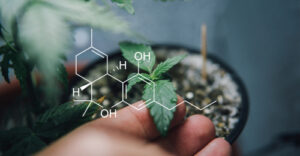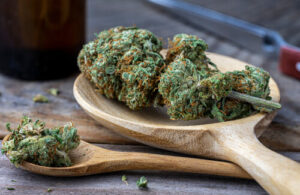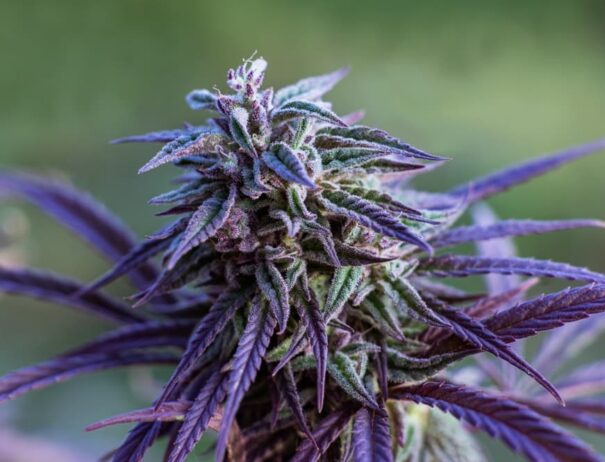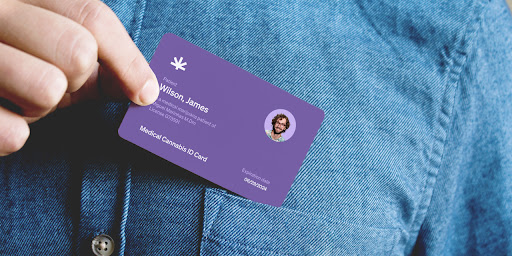Endocannabinoid System 101: How to Boost Your ECS
A fun fact about flower—it’s the reason the endocannabinoid system (ECS) was discovered! Over 30 years ago, a government-funded study confirmed that the human brain has receptor sites that respond to the phytocannabinoids in flower. Because of that discovery, scientists were then able to identify the first endocannabinoid produced by the human brain, which they named anandamide and which, in turn, confirmed the existence of the ECS.
Research has only expanded since then, establishing that every vertebrate on the planet has an ECS. And while we still don’t know everything about the ECS’s functions, we do know that the compounds in flower and other plants interact directly and indirectly with it. Now that we’re entering a new era of flower legalization and therefore flower research, we’re finally starting to learn more about the function of the endocannabinoid system and everything it’s responsible for.
What Is the Endocannabinoid System?
The endocannabinoid system is a communication system in your body. It has a hand in about every function, from the amount of oil that’s on your face to how much pain and inflammation you feel when you get hurt.
To get its job done, the ECS employs three main workers: cannabinoids, cannabinoid receptors, and enzymes.
Main Components of the Endocannabinoid System

Cannabinoid receptors are what cannabinoids bind to or stimulate. There are two main ones: CB1 and CB2. Though both are located throughout the body on the surface and interior of cells, they’re more prevalent in certain areas. CB1, found mostly in the nervous system, is one of the most abundant receptors in the brain. CB2 is mainly outside the nervous system, with a heavy concentration in the immune system.
Enzymes come in and break down cannabinoids once they’ve served their purpose. They’re an important part of the equation because they ensure the cannabinoids get the job done but aren’t employed for longer than needed.
Endocannabinoid System Function
With the goal of maintaining balance within the body, the endocannabinoid system leaps into action anytime you experience a system imbalance, big or small. Once off balance, the ECS deploys cannabinoids to its receptors. What happens after that depends on which cannabinoid was deployed, which receptor is stimulated, and where that receptor is located.
For example, if you’re experiencing shoulder pain, your ECS might send cannabinoids to that area to bind with CB1 receptors and reduce the strength of the pain signal. At the same time, it might also send cannabinoids to CB2 receptors which help to reduce inflammation. Both actions, while working from different angles, will reduce the amount of pain you’re feeling.
How to Boost Your Endocannabinoid System
Yes, the body does create cannabinoids on its own. But, that doesn’t mean you can’t experience an endocannabinoid system deficiency. Science is still researching what an ECS deficiency can look like, but the theory is similar to other neurotransmitter deficiencies, like depression caused by a serotonin deficiency. Many treatment-resistant syndromes like fibromyalgia, migraines, and irritable bowel syndrome (IBS) are now being studied as possible effects or outcomes of an endocannabinoid system deficiency.
Fortunately, there are ways you can boost your endocannabinoid system on your own through the help of flower and other herbs. While the phytocannabinoids found in flower are the main ECS-stimulating compounds, other plant compounds can boost your ECS as well.
Terpenes, which are nature’s aromatic compounds (think skunky flower or the smell of pine), can be found throughout nature and can work synergistically with cannabinoids to enhance their effect.
Similarly, flavonoids, which are nature’s pigment and flavor compounds and are responsible for the color of flowers, can also enhance the effects. This synergistic energy is known as the entourage effect, and it’s the key to boosting your endocannabinoid system.
Using Herbs to Boost Your ECS

Full-spectrum CBD oil is widely available, but as a new and largely unregulated industry, the labels on CBD oil can often be misleading or incorrect. To avoid confusion and ensure you’re consuming what you want to be consuming, try making your CBD oil at home. Using a simple machine like the LEVO II makes it easy, plus you can control the ingredients and potency of your CBD oil. Not to mention, the LEVO II can dry, activate, and infuse any herb, so you have the opportunity to harness essential compounds like terpenes and flavonoids from other herbs as well.
ECS Key Takeaways
As prevalent as the ECS is throughout nature, we’re still learning all it does for us and how we can encourage its function. Here’s what we know so far:
- The endocannabinoid system is a communication system in your body that’s responsible for maintaining metabolic balance within the body.
- It has three main components: cannabinoids, receptors, and enzymes. Cannabinoids bind to receptors when an imbalance occurs, and then enzymes break down the cannabinoids once their job is done.
- The brain synthesizes cannabinoids on its own, called endocannabinoids, and they interact with our ECS in much the same way flower’s phytocannabinoids do. We can experience an ECS deficiency, but we can work to remedy it by consuming phytocannabinoids and other plant compounds like terpenes (aromatic compounds) and flavonoids (flavor and pigment compounds).
- Consuming full-spectrum CBD oil can help boost your ECS, but since the industry is still largely unregulated, it can be hard to find a CBD oil that actually contains the ingredients and potency listed on its label.
- Making your CBD oil at home is a lot easier, and you’re guaranteed to know what ingredients you’re ingesting. Chic countertop machines like the LEVO II make it easy to make your own CBD oil, as well as other herb-infused topicals and ingestibles that can help stimulate your ECS.
As research continues to explore the endocannabinoid system and its role in our wellbeing, we’re sure to uncover more ways it’s working to keep us in check. In the meantime, it’s important to make sure your ECS is well-balanced, and flower products like CBD oil can help you do just that.
Related Posts:

Get Your Free eBook!
Download our FREE resource, The Ultimate Edibles Guidebook, full of recipes, infusion tips and everything you need to make your first batch of edibles today!



